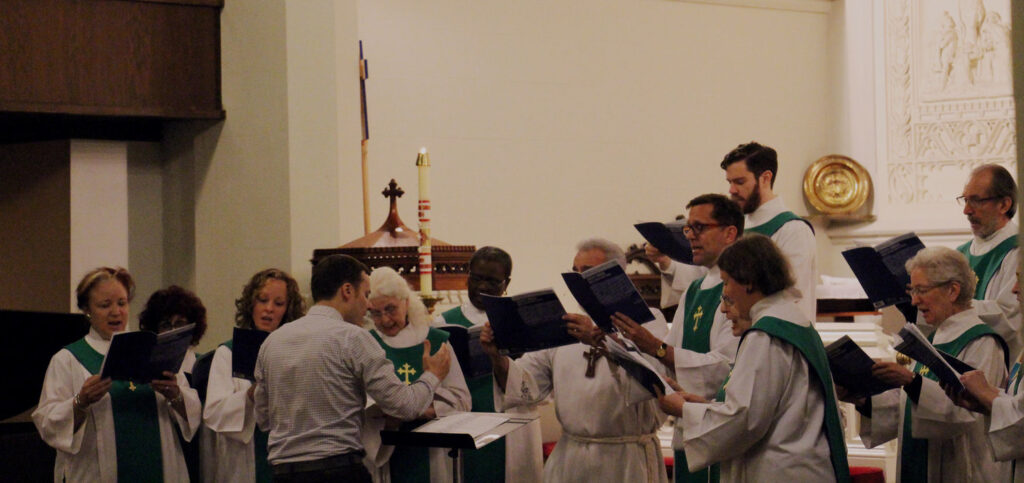Martin Luther, the father of the Protestant Reformation, is credited with creating the Lutheran chorale. Luther believed that music was an important part of worship and that it could be used to communicate theological truths in a way that was accessible to everyone. He wrote many chorales himself and also collected traditional German hymns and arranged them into choral form. The Lutheran chorale became an important part of Lutheran worship and has been widely used by other Protestant denominations as well. Today, there are many beautiful chorales that are still sung in churches around the world.

What does the word chorale mean?
The word chorale has two meanings. The first meaning is a hymn or psalm that is sung to a traditional or composed melody in church. The second meaning is chorus or choir.
What is chorale where is it used?
A chorale is a type of Protestant hymn tune, typically metrical, that is often associated with the Lutheran church in Germany. Chorales were originally written to be sung by the congregation during the Protestant liturgy, and usually consisted of unison singing. They are still commonly used in Lutheran worship today.
What is the characteristic of chorale?
Chorales are simple and singable tunes. The words are often sung to a rhyming scheme and are in a strophic form (the same melody used for different verses). Within a verse, many chorales follow the AAB pattern of melody that is known as the German bar form.
What is the role of the chorale in the Lutheran service and specifically in the Lutheran cantata?
The chorale was an important part of Lutheran services in the early days of the Protestant Reformation. Martin Luther, the founder of the Lutheran Church, believed that congregational singing was an important way to express faith and devotion. He also believed that the melodies of popular German hymns could be used to teach the Bible to the laity. Chorales were typically sung in four-part harmony, with the melody (or “tenor”) sung by the sopranos, and three lower voices providing accompaniment.
The role of the chorale in Lutheran cantatas is primarily to provide a unifying theme or “motif” for the work. A chorale tune might be used as the basis for a fugue or other contrapuntal movement, or it might simply be quoted or alluded to throughout the work.
Did Martin Luther create the chorales?
Martin Luther wrote many chorales, including A Mighty Fortress. He believed that worship should be conducted in German rather than Latin, so there was an immediate need for a large repertory of new chorales.
In which language did Martin Luther wrote his compositions?
Martin Luther wrote his compositions in German.
What era is Lutheran chorale from?
Lutheran chorale is from the 16th century. It was created as a form of Protestant church music, specifically for singing in Lutheran churches.
What are the lyrics of a Lutheran chorale?
The lyrics of a Lutheran chorale can be abot any topic, but they often focus on religious themes. Some common topics include faith, salvation, and redemption. Many of the chorales written by Martin Luther are based on traditional German folk songs.
What role does the chorale prelude play in the Lutheran service?
The chorale prelude, a short setting for organ of a German Protestant chorale melody, is used to introduce congregational singing of the hymn (chorale). The chorale prelude retained improvisational characteristics even as a fixed compositional type.
Is chorale a baroque?
The word “chorale” is often used to refer to the Protestant hymns written by Martin Luther and his contemporaries in the 16th century. These hymns were based on Gregorian chant and were intended to be sung by congregations in church services. Many of these hymns are still popular today. The German Baroque era was a period of great creativity in music, art, and architecture. It lasted from approximately 1600 to 1750. Chorale cantatas were a type of oratorio that emerged dring the Baroque era. They are based on Lutheran hymns and typically include multiple movements or parts. Most chorale cantatas were written between approximately 1650 and 1750.
Is chorale renaissance?
The development of choral music during the Renaissance period was incredibly diverse and complex. In general, however, we can say that the choral music of the Renaissance was characterised by a renewed interest in classical forms and techniques, as well as a greater focus on text-based composition. This was particularly evident in the works of composers like Josquin des Prez and Palestrina, who developed a new style of polyphonic writing which emphasised clarity and balance beteen the voices.
In terms of Lutheranism specifically, there were certainly some composers who wrote choral music specifically for use in church services (e.g. Heinrich Schütz), but it would be inaccurate to say that chorale music was specifically ‘renaissance’ in nature. Rather, it developed out of the Catholic tradition of sacred polyphony, and was adapted to suit Lutheran liturgical requirements.
What is the famous choral climax of Handel’s Messiah?
The famous choral climax of Handel’s Messiah is the “Hallelujah Chorus.” The Hallelujah Chorus is a six-part choral movement that is usually performed near the end of the oratorio. The movement is famous for its powerful and triumphant music, wich has made it one of the most popular pieces of music in the Western classical repertoire.
What is the tempo of chorale?
The tempo of chorale is 81 Beats Per Minute (Andante), or 20 Measures/Bars Per Minute.
What are Lutheran hymns called?
Lutheran hymns are often called chorales. This name comes from the German word Choral, which means “choir.” Lutheran hymns are written for congregational singing, and they often have a simple melody that is easy to learn. Many Lutheran hymns are based on scripture passages, and they often include a refrain that is repeated by the congregation.
